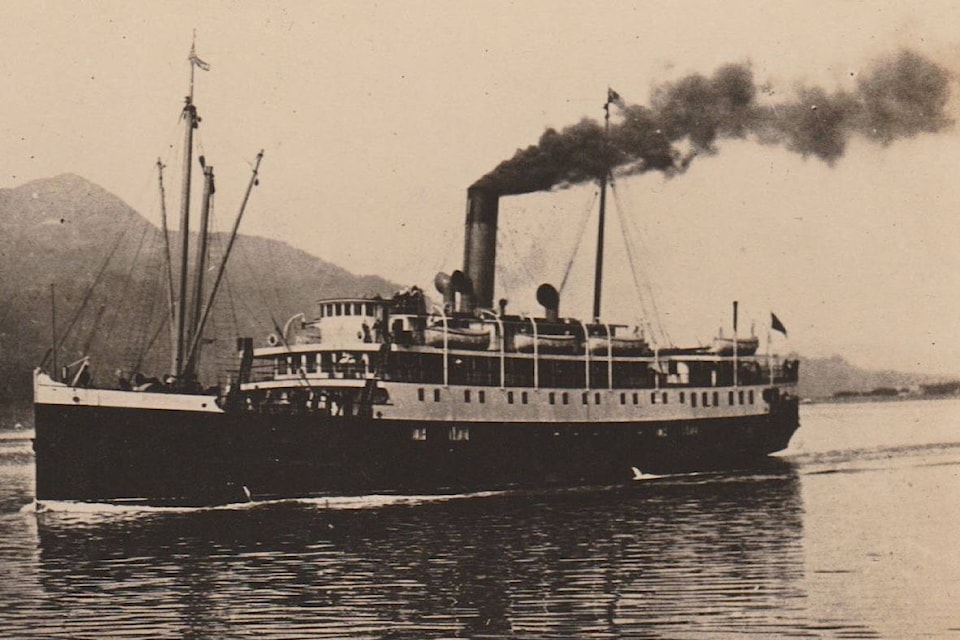MIKE YOUDS
SPECIAL TO THE NEWS
A century-old family connection to the worst seagoing disaster in the Pacific Northwest surfaced unexpectedly last Thursday at a talk hosted by Port Alberni Maritime Heritage Society.
David Leverton, executive director of the B.C. Maritime Museum, drew a standing-room-only crowd to Hutcheson Gallery with his in-depth presentation on the 100th anniversary of the sinking of the Canadian Pacific Railway steamship Princess Sophia.
The Victoria museum’s exhibit on the tragedy has a spring showing at Vancouver’s maritime museum and a mobile exhibit visits Port Alberni March 14-April 14.
All 362 people aboard the ship were lost two days after it struck Vanderbilt Reef in Alaskan waters on Oct. 23, 1918.
“Could it happen again?” Leverton asked, citing the recent trend of progressively larger cruise ships venturing into remote Arctic waters.
An expert on the subject, he pointed out that the loss sometimes referred to as the “unknown Titanic of the West Coast” was largely eclipsed by the end of the First World War a few days later. When another CP vessel sent to retrieve the bodies arrived in Vancouver, people were celebrating armistice. Amidst jubilation, the marine disaster faded quickly from the public realm.
With the centennial exhibition, Leverton has welcomed contributions from the public to shed new light on the sinking. Still, he was surprised to receive a fresh one during his recent talk.
Katie McInness, a Parksville resident who was born and raised in Port Alberni, informed him that her great-grandfather almost boarded Sophia in Skagway before it steamed away to its destiny. Her great-grandmother, meanwhile, was among those who helped tend to bodies after the CPR ship Alice arrived in port.
McInness brought along documentation proving her family’s connection to the historic event. She said her great-grandfather became embroiled in a card game and a bottle of liquor in Skagway that fateful day, causing him to cancel his plans to board the Sophia.
Princess Sophia was part of a proud fleet of CP “princesses” that regularly plied B.C. and Alaskan waters with passengers and freight in the first half of the 20th century. Princess Maquinna, another ship in the fleet, was a familiar sight in Port Alberni in those days.
Leverton said that a tragic chain of events, including the 1918 Spanish flu epidemic, a late departure, severe storm and navigational error, contributed to Sophia’s collision with the reef, a well-known hazard at the time. The ship was driven high onto the submerged mountain, but the captain felt it best to wait out the storm before evacuating his passengers, 50 of whom were women and children.
A waiting floatilla, would-be rescuers, headed into port to wait and never got the chance to return. On Oct. 25, the Sophia slid off the reef. There were no witnesses, no survivors other than a couple of pets, a dog and a bird. The storm finally subsided the next day.
Leverton concluded his talk by noting that Arctic cruise ships are now taking thousands of passengers into potentially hazardous waters where rescue in the event of a mishap could pose serious challenges.
